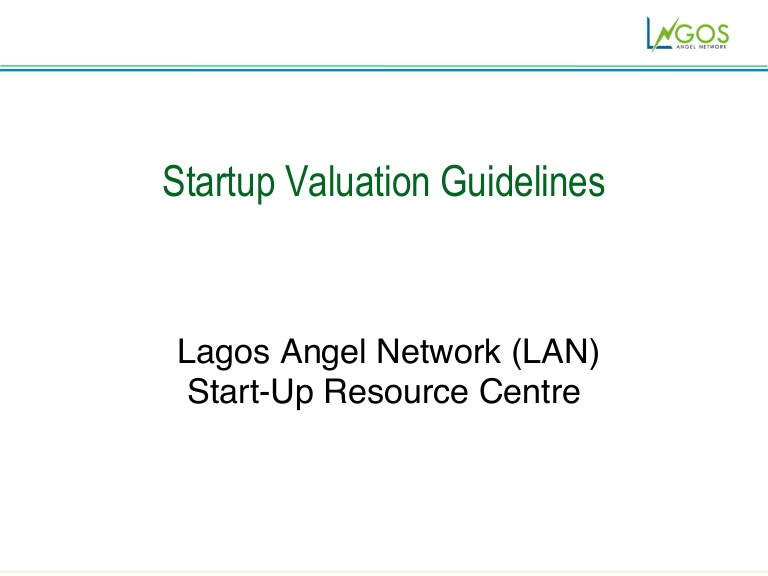Contents
Finding no other way, she paid all the bills and filed the health insurance claim for getting just a small fraction of it as reimbursement. A cedent is a party in an insurance contract who passes the financial obligation for certain potential losses to the insurer. Catastrophe excess reinsurance is a policy that protects a catastrophe insurance company from insolvency following a disaster. Co-reinsurers are often relatively small companies that could not take on the level of risk that the contract requires. A group of reinsurers participating in a co-reinsurance scheme is sometimes referred to as a pool.
To answer this question, copay depends on the plan that you are considering buying. As with coinsurance for business property, the insured company would need to cover a certain percentage of their business income to receive full coverage. Because businesses can experience periods of growth, it’s important to regularly reevaluate your expected business income to make sure the estimate is accurate. When you purchase a commercial property insurance policy, it’s a good idea to conduct an appraisal of your property to make sure you value your property accurately. If you guess at the value of your property, you could find yourself paying coinsurance penalties if the insurer finds that the estimate wasn’t accurate.
When you purchase a commercial property insurance policy, it’s crucial to understand your insurer’s coinsurance requirements. By ensuring that your property is valued accurately and you have a suitable amount of coverage, you can rest assured that any claims that arise will be fully covered. When you shop for a health insurance plan, the plan descriptions always specify the premiums , deductibles, copays, coinsurance, and out-of-pocket limits. In general, premiums are higher for plans that offer more favorable cost-sharing benefits. Co-insurance is a clause used by insurance companies on policies covering property such as buildings, contents, stock, or industrial equipment. This clause makes sure policyholders insure their property to an appropriate value and that the insurer receives a fair premium for the risk, whether on a replacement cost basis or on an actual cash value basis .

Out-of-network providers are everything else—and they are generally much more expensive. For example, if you have a $50 specialist copay, that’s what you’ll pay to see a specialist—whether or not you’ve met your deductible. In the unlikely event of matter being not resolved at Level 3 of the escalation mechanism, the first party can make a representation to the General Insurance Council. The Council secretariat shall then write to the insurers concerned and try and resolve the matter. In the event of any breach of the terms and conditions of this coinsurance agreement, where one member of the coinsurance arrangement feels aggrieved by the action of another, the dispute shall be resolved in the following manner. This coinsurance agreement would be applicable only in cases where the policies are issued to other than individuals.
The co-insurance clause can also be found on business interruption policies where it ensures that policyholders insure their revenue stream to an appropriate value. The insured keeps paying the amount till the out-of-pocket maximum for the policy is achieved. Afterward, the insurer will pay the full healthcare charges until the policy year concludes or the policyholders switch the insurance plans. If a structure is not insured to this level and the owner should file a claim for a covered peril, the provider may impose a coinsurance penalty on the owner.
One hundred percent coinsurance requires you to insure 100% of the value of your property. Premium rates are generally lower for policies that require 100% coinsurance. However, there is a higher risk of the policyholder being penalized if property is not valued accurately.
Coinsurance applies when a policyholder decides to purchase less coverage for their property than would be required to fully cover the rebuild cost. Underinsurance refers to inadequate insurance coverage, which can cause financial hardship for a policyholder. After you have reached your deductible your coinsurance for different procedures will kick in. This means that you can take full advantage of your insurance plan up to your annual out-of-pocket maximum. If you need more extensive treatment, consider a phased plan that takes advantage of multiple insurance benefit years. For example, if you start treatment in the second half of the year and you know the annual maximum will renew in January, you could take advantage of two benefit years within a few months.
First, What Is a Deductible?
Let’s learn the concept of coinsurance with the help of an example. She was waiting for her turn to pay the medical bills and get her brother discharged from the hospital. The advantage of a copay is that it allows for greater predictability for the consumer, and they are generally more affordable. Your search for affordable Health, Medicare and Life insurance starts here. First, I could have driven to that other hospital faster, we also had tried to do everything in-network.

At AdvisorSmith, our mission is to bring clarity to business insurance and provide straightforward, honest research to empower small business owners. We, like you, are small business owners, and your success is our success. In order to accomplish our mission, we, at times, are compensated by our partners. While this partnership may influence where and how products appear on our site, it in no way impacts our research, recommendations, or advice. We feature products and services from companies we find reputable, whether or not they are our advertising partners. No partner can guarantee placement or favorable reviews on AdvisorSmith.
www.insureon.com
In terms of coinsurance vs deductible vs copays, these “out-of-pocket” expenses typically differ in the payment process, applicability, and risk factor. Because you pay a set amount at the time of each service or purchase, copay plans make it easier to anticipate your health-care expenses. You’ll always pay the copay, regardless of whether you’ve met your deductible or not. On the other hand, once it starts applying, coinsurance may mean lower outlays overall. Also, coinsurance goes toward meeting your policy out-of-pocket maximums. The coinsurance clause in a property insurance policy requires that a home is insured for a percentage of its total cash or replacement value.
After a fire damages the company’s building, it is forced to stop operating for two months, and the business makes a business income claim for $350,000. Because the company’s coverage meets the coinsurance minimum, the business will receive the full value of their claim. Say you have an individual plan with a $3,000 deductible, $50 specialist copays, 80/20 coinsurance, and a maximum out-of-pocket limit of $6,000.
Most dental insurance plans place an emphasis on preventive care. You may find your plan pays 80% or more for cleanings, exams, and X-rays twice each year. Reaching the maximum means that you will be responsible for all treatments out-of-pocket after the yearly maximum is reached. This can make it difficult if you need multiple expensive procedures such as a root canal with a crown on more than one tooth. Coinsurance is typically defined as any insurance where you pay a portion of the total payment against the claim. Dental coinsurance, specifically, is a rate that you pay for dental procedures that you may undergo at the dentist’s office.

Also, the clause is more prevalent for people residing in metro cities. Agreed value is a set value for your property that insurers may use instead of appraising the value of your property after a loss. You may be able to negotiate with your insurer to determine an agreed value when you purchase a policy. If a claim arises, the insurer will use the agreed value to handle the loss. Because the value of the property is already agreed upon, this would eliminate the risk of a coinsurance penalty. However, it’s important to remember that agreed value is only in effect for the term of the policy and will need to be updated when you renew your policy.
What Are Copays?
As mentioned above, plans with high copay are comparatively cheaper. However, this also means you have to bear a specified portion during the claim settlement. Therefore, just because the plan is more affordable, you should not buy it without assessing your coverage requirement.
A waiver of coinsurance clause is language in an insurance policy spelling out conditions under which policyholders do not have to pay a portion of a claim. Coinsurance is different from a copay because a copay is a flat fee whereas coinsurance is based on a percentage. For example, with a copay plan, your cost for a root canal might be a flat $100 fee, regardless of how much the procedure costs.
- As a journalist, he has extensively covered business and tech news in the U.S. and Asia.
- When the copay is higher, it will lead to a lower premium amount but higher out-of-pocket expenses during a claim.
- Reinsurance is the practice of one or more insurers assuming another insurance company’s risk portfolio in an effort to balance the insurance market.
- Copay plans spread the cost of care over a full year and make predicting your medical expenses easier.
- Because such provisions are often misunderstood, here the basics on how a coinsurance clause works to help minimize any potential confusion.
Your costs can vary depending on how much treatment you need at one time, or the complexity of the procedure. Your coinsurance is the percentage that you will typically pay out-of-pocket while your insurance company will pay for the remaining the costs of your treatment. For example, if you have a 20% coinsurance you would be responsible for 20% of the cost of a procedure while your insurance company would cover the co insurance definition remaining 80%. Coinsurance can apply to cleanings, fillings, or many other types of dental care. It is also important to note that coinsurance does not kick in until you have reached your deductible, until you reach your deductible you are responsible for all costs out-of-pocket. Coinsurance divides the risk of loss according to the amount of insurance purchased by each person through the payment of premiums.
Co-insurancemeans the portion of the carrier’s allowable charge for the covered item or service which is not paid by the carrier and for which the enrollee is responsible. Co-insurance.Percentage based participation of the beneficiary on each loss or portion of the cost of receiving a service. When it comes to home insurance in Canada, you’ll probably never see a coinsurance clause. DisclaimerAll content on this website, including dictionary, thesaurus, literature, geography, and other reference data is for informational purposes only. This information should not be considered complete, up to date, and is not intended to be used in place of a visit, consultation, or advice of a legal, medical, or any other professional.
Due to the extremely high potential costs of some disasters, reinsurance companies sometimes choose to mitigate their risks by acting together. Co-reinsurance is a contractual agreement for two or more reinsurance companies to share the fees and the potential costs of the coverage. Failure to reimburse such share shall render the defaulting Co-Insurer liable for payment of penalty @ 10 % per annum after expiry of stipulated period of 21 days, until it is paid in full. The responsibility for effecting TDS on these payments shall be upon the Lead Insurer and the necessary credit shall be obtained from the following coinsurers. If a property owner chooses to insure for less than the amount required by the co-insurance clause, the property owner is essentially agreeing to retain part of the risk rather than transfer it to the insurance company.
Because such provisions are often misunderstood, here the basics on how a coinsurance clause works to help minimize any potential confusion. Even if there is a copayment clause, it is a small amount of the claim amount. This is because the insurance company still bears the majority of the claim amount. Typically, the copay is levied on medical expenses such as hospitalization costs, doctor’s visits, lab tests, medicines, etc.
Coinsurance: One Piece of the Out-of-Pocket Puzzle
The specialist prescribed you some medication for your eye, so you head to the pharmacy to pick it up. The prescription costs $60, so you are asked to pay $12 out of pocket (20% of $60), and your insurance takes care of the remaining https://1investing.in/ $48. Insurers apply copay clauses based on different scenarios as mentioned below. Well, such cases are not rare, and to avoid such uncomfortable scenarios, it’s important to learn the concept of copay in health insurance.
Property Insurance Coinsurance
Insurance providers often charge co-pays for services such as doctor visits or prescription drugs. Coinsurance is the portion of healthcare costs that you pay after your spending has reached the deductible. For example, if you have a 20% coinsurance, then your insurance provider will pay for 80% of all costs after you have met the deductible. This will be recovered at the first instance from and out of the premium earned and only the balance premium will be apportioned.

Recent Comments